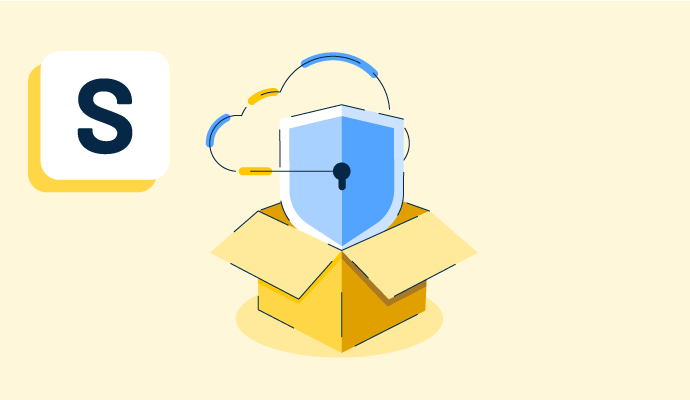What is Security as a Service?
Security as a service (SECaaS) is a business model wherein a cybersecurity vendor provides security resources and tools to its clients through the cloud. The clients outsource their security requirements to the vendor, giving internal teams more agility and space to focus on critical issues.
SECaaS solutions allow organizations to integrate external security services seamlessly into their existing infrastructure. These solutions protect against threats without on-premise hardware or an in-house cybersecurity team. This saved on costs and scales security requirements as needed.
Many organizations turn to security and privacy service providers to to alleviate the pressure on internal IT teams, helping them focus on more critical tasks.
Benefits of Security as a Service
Adopting SECaaS has several benefits for the organization. Businesses get the most up-to-date tools and expertise while paying only for the time used.
- Professional expertise. SECaaS providers are highly-skilled, domain expert technicians who help enterprises enhance their security capabilities.
- Deployment flexibility. As a cloud-native model, SECaaS can handle evolving workplaces and cloud migrations with flexible deployment and zero complex hardware installations.
- Extra layer of protection. SECaaS is a preventive service that intercepts various attacks before reaching an organization.
- Cost efficiency. The flexible cost of SECaaS services lets enterprises pay only for the services they use.
- Latest security technologies. SECaaS empowers organizations to access the latest security technologies and resources based on a subscription model. Service providers take responsibility for updates and upgrades, reducing the burden on businesses.
Security as a Service examples
Organizations use different SECaaS platforms for diverse security requirements. Below are common SECaaS examples.
- Identity and access management (IAM) controls access intelligence, identity verification, and access management. It looks after processes such as provisioning and de-provisioning of accounts and various other functionalities related to authentication.
- Data loss prevention is a preventive measure to make sure structured, unstructured, and semi-structured data remains controlled. It includes data labeling and classification, identification of sensitive data, structured data matching, and structured query language (SQL) regular expression detection.
- Web security offers real-time protection against online threats by redirecting web traffic to the cloud provider. Services include web filtering, spyware detection, and phishing site blocking.
- Email security solutions control both inbound and outbound emails via the company domain. It helps companies enforce corporate policies related to email communication.
- Security assessments cover audits of cloud services or assessments of on-premises systems via cloud-provided solutions, including risk management, compliance audits, and application security assessments.
Characteristics of a good SECaaS provider
Consider these aspects of an effective SECaaS provider to find a suitable solution for the business.
- Availability. Make sure the SECaaS provider’s tools and networks offer near-constant availability.
- Vendor partnerships. Find out who the technology vendors of the SECaaS provider are. This helps assess the security solutions the provider can deliver.
- Disaster recovery. See to it that the SECaaS provider offers customized recovery options as they are necessary for business continuity.
- Affordability. Check the total cost of ownership for the security solution and make sure it aligns with the budget.
- Support. Know whether the provider has round-the-clock support and truly global coverage to address security incidents promptly. Ask several questions about their response time in security events.
- Flexibility. Assess the provider's ability to scale and adapt to your changing security needs, as the chosen provider should be able to grow with the organizational requirements.
- Reporting. Learn about the reporting process the provider follows to share updates about security status and incidents.
Features of SECaaS
SECaaS includes several features to address different security concerns.
- Intrusion detection utilizes pattern recognition to detect and respond to statistically unusual events in real time.
- Security, information, and event management (SIEM) records logs and event information, then analyzes it to provide real-time reporting and alerts.
- Encryption safeguards data through validation, message authentication, and code signing.
- Network security distributes, manages, and tracks security controls in a network while monitoring traffic.
Security as a Service vs. managed security service providers
Security as a Service (SECaaS) and managed security service providers (MSSPs) are the two main approaches to cybersecurity services.
SECaaS is a more comprehensive approach to cybersecurity that involves outsourcing security needs to a cloud-based service provider. It offers many security solutions for protecting an organization's digital assets. When an incident happens, it deploys incident response services, helping organizations investigate and mitigate security incidents.
Although MSSPs do the same thing, their services are more focused and less comprehensive. They help organizations monitor and manage security needs, but their approach differs slightly from SECaaS. For example, MSSPs provide system monitoring to alert the team when it discovers anomalies. SECaaS does the same while going beyond alerts to offer incident response and remediation.
Learn more about MSSPs and discover the security services organizations can outsource.

Sagar Joshi
Sagar Joshi is a former content marketing specialist at G2 in India. He is an engineer with a keen interest in data analytics and cybersecurity. He writes about topics related to them. You can find him reading books, learning a new language, or playing pool in his free time.

